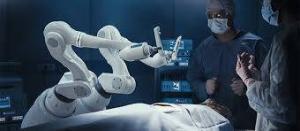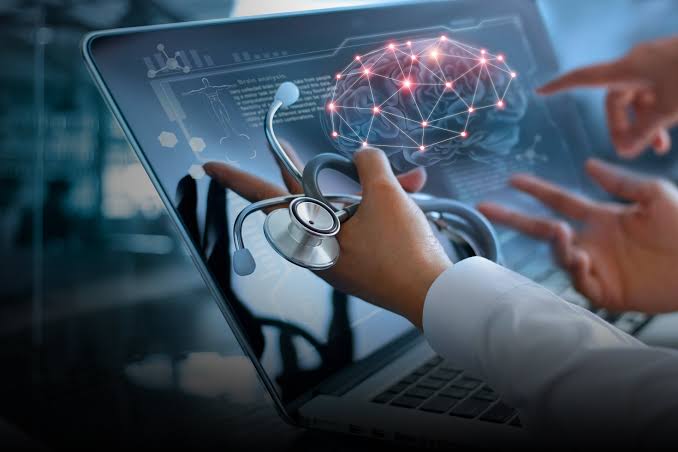When you purchase through links on our site, we may earn an affiliate commission. This doesn’t affect our editorial independence.
The future of the healthcare sector depends heavily on technology. In the same way that technology like computers, smartphones, 3D printing, big data, and cloud computing have changed most facets of our lives in recent decades, they will also change health and patient care in the months and years to come.
The combination of intelligent new technologies and a patient population that is becoming more knowledgeable is what is causing this transformation. But emerging technologies also present new difficulties for medical professionals, so it’s critical to resist the notion that there is a digital solution for every human issue. We must approach new medical technologies with curiosity and a critical mindset.
Here Are Eleven of the Most Significant Advancements in Health Technology in Recent Years
1. Trackers and Sensors
The collection of personal medical data is becoming simpler thanks to devices like heart monitors and step counts. Over time, improved diagnosis and evidence-based treatment are made possible by real-time and authentic data. Real-time blood glucose monitoring is possible with AI (Artificial Intelligence) chips, which can then communicate with an automated drip to deliver insulin or glucose based on the data. Patients no longer have to wait for lab results or undergo repeated blood tests thanks to this technology.
In an emergency, trackers and sensors also assist specialists in taking early action. Many older people who live alone or in care already use fall monitors extensively. People who are susceptible to falls are seeing significant gains in their health and quality of life as a result.
2. Augmented Reality
Medical applications of Augmented Reality (AR) are showing remarkable outcomes. In contrast to Virtual Reality (VR), augmented reality (AR) aims to enhance the user’s sensory experience rather than take its place. This makes it possible to update data much more closely to real-time. Surgeons can execute complex procedures more safely by using AR to gain previously unheard-of access to a patient’s internal anatomy. AR can lessen the possibility of misunderstandings and errors by assisting a practitioner in synthesizing several bits of information at once.
3. Virtual Reality
Virtual Reality (VR) can be used to improve patient outcomes and train medical personnel. The most effective simulations evoke the same emotional reactions as actual experiences. Higher-stakes surgeries can be better prepared for using these reality-enhanced surgical simulators than with more conventional techniques like manikin exercises or cadaver labs. This also applies to healthcare in general. A great way to get a patient ready for surgery is with virtual reality. Additionally, it can be used to inform patients about the negative effects of medications.
4. Chatbots
Chatbots can now assist healthcare providers in a variety of ways thanks to recent advancements in Machine Learning (ML) and Natural Language Processing (NLP). Large datasets can be accessed by chatbots, which can then offer helpful insights in a conversational style. They can assist in making clinical appointments and respond to inquiries from patients regarding symptoms, dietary information, and other topics.
For instance, the World Health Organization (WHO) and WhatsApp collaborated in 2020 to use a chatbot to deliver COVID-19 information. Chatbots can grow in size. They can answer all of the often asked inquiries and direct more complex ones to a physician, nurse, or other health care provider. In addition to saving healthcare providers money, this frees up doctors and nurses to concentrate on areas where they are most needed.
Inquiries about health insurance, diagnosis, and mental health support can all be handled by chatbots. For instance, individuals suffering from anxiety, PTSD, and depression can currently receive Cognitive Behavioral Treatment (CBT) via chatbots. Additionally, they are assisting individuals with autism in developing their social and interviewing abilities.
5. Better Management of Medical Records
Improving medical data gathering and sharing is one of the most significant ways technology is influencing healthcare. Faster diagnosis, more consistent treatment, and fewer errors are all made possible by consolidated electronic health records. We are already used to this in its early phases. For example, nurses can obtain vital information from the Australian National Immunization Database, which is used to isolate and eradicate illnesses. Remote and regional areas that might not have as much access to health facilities can benefit greatly from data networks.
6. Sequencing The Genome
The cost of genome sequencing is falling down, and soon genetic consultation will be commonplace. As with many historical breakthroughs, it is crucial to keep in mind that gene technology is likely to be abused by the powerful. However, technology is here to stay, and we shouldn’t allow fear to stop us from embracing its potential to improve people’s lives. Technologies like CRISPR have the potential to save many lives by improving preventative medicine and helping us understand allergies and congenital diseases.
7. Robotics
Robots‘ specialized roles and ability to carry out repetitive motor activities make them ideal for individuals undergoing rehabilitation. Surgical operations are also being altered by robotics technology; machines can currently carry out various operations with less risk than human surgeons. For example, skilled human radiologists and surgeons can inject anti-cancer medications into tumors with a couple of millimeters of accuracy.

IRCAD has developed a low-cost surgical robot that can locate and inject tumors with a tenth of a millimeter of accuracy. These autonomous units will transform hospitals and medical care globally as they become more efficient and affordable.
8. 3D Printing
Healthcare is being revolutionized by 3D printers. They are already being used to produce prosthetics that are both more affordable and of greater quality than was previously thought possible. Each implant can be custom-made for each patient’s body using 3D printing. They’ve even 3D printed bones. The top portion of a woman’s skull was replaced by a plastic facsimile that was custom-printed by doctors in the Netherlands. Additionally, advancements may be implemented quickly because to the technology’s ease of decentralization and replication. There seems to be no limit to the possibilities.
9. Telemedicine
The disparity in access to medical services between urban and rural areas is also being reduced thanks to technology in healthcare. In Australia, the remoteness of medical facilities and specialists has historically harmed regional and rural communities.
However, NBN technology‘s quicker internet connections have made it more feasible for experts and other healthcare professionals to consult via video conversations.
Patient treatment can be provided in the patient’s home rather than at a metropolitan hospital for clinical consultations or surgical follow-ups.
Recently, telehealth has also been employed to reduce the risk of COVID-19 transmission by avoiding in-person interactions for patients in both urban and rural areas. Patients can now take a more active role in tracking their symptoms and receiving treatment because of developments in telemedicine.
10. Quicker Medication Development
The process of creating new medications is costly and time-consuming. But a metal detector is a huge help when you’re attempting to find a needle in a haystack. The ability of artificial intelligence to discover novel and more potent medications has grown. These developments alone are responsible for many of the advances occurring in fields as disparate as HIV and cancer.
11. Improved Personnel And Scheduling Efficiency
Although hospitals can be chaotic places, nurses can use digital technology to better plan their shifts and interactions with patients. Programs like those developed by Cerner Clairvia and GE Healthcare Centricity are designed to address the unique difficulties of scheduling nurses in high-pressure, round-the-clock settings. Some of these apps are even compatible with smartphones. They give nurses simple channels of communication to express their wants and preferences, and they enable nurse supervisors to plan shifts in an effective and efficient manner.








